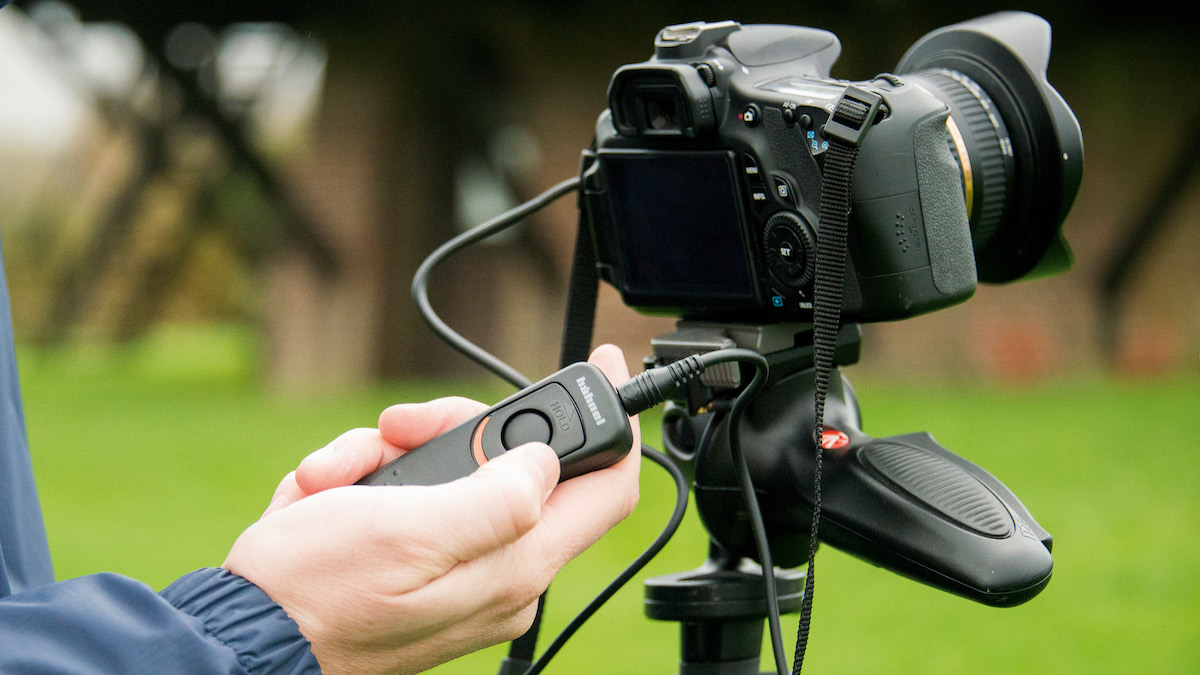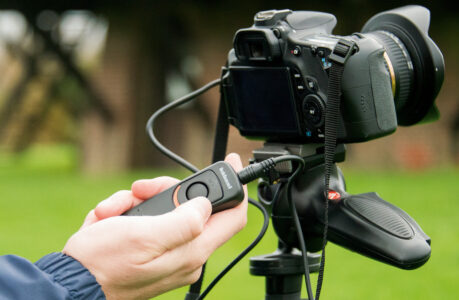Capturing the Cosmos with Precision: Unveil the Wonders of Astrophotography
Astrophotography, the art of capturing celestial objects and celestial phenomena through the lens of a camera, is a mesmerizing hobby for many. Whether you’re an amateur stargazer or a seasoned astrophotographer, one question often arises: “Do I need a remote shutter release for astrophotography?” In this comprehensive guide, we’ll delve deep into the world of astrophotography, explore the significance of a remote shutter release, and help you make an informed decision about adding this valuable tool to your astrophotography gear.
Unveiling the Mysteries of Astrophotography
Astrophotography is a niche within photography that focuses on capturing the beauty of the night sky. This captivating pursuit enables photographers to immortalize celestial wonders like stars, planets, galaxies, and nebulae in stunning detail. Unlike traditional daytime photography, astrophotography poses unique challenges due to the low-light conditions and the need for long exposure times.
Photographing celestial objects requires precise control over your camera settings and the ability to minimize any vibrations or disturbances during exposure. This is where a remote shutter release comes into play.
What Is a Remote Shutter Release?
A remote shutter release, often referred to simply as a “remote,” is a handy device that allows you to trigger your camera’s shutter without physically touching the camera. It consists of a button or trigger mechanism connected to your camera via a cable or wirelessly. The primary purpose of a remote shutter release is to eliminate camera shake caused by pressing the camera’s built-in shutter button.
The Core Functions of a Remote Shutter Release
Before we dive into its relevance to astrophotography, let’s understand the fundamental functions of a remote shutter release:
- Shutter Release: The most basic function is to release the camera’s shutter, initiating the exposure process. This is done with minimal physical contact, reducing the risk of camera shake.
- Bulb Mode: Many remote shutter releases offer a “bulb” mode, allowing you to keep the shutter open for an extended period, often beyond the camera’s default limit of 30 seconds. This is crucial for capturing faint astronomical objects.
- Intervalometer: Some advanced remote releases include intervalometer features, enabling you to set intervals between consecutive exposures. This is handy for creating time-lapse sequences or stacking multiple images for improved quality.
- Long Exposure Noise Reduction (LENR): Certain remotes offer the ability to activate Long Exposure Noise Reduction, a feature that helps reduce noise in long-exposure shots—a common requirement in astrophotography.
The Importance of a Remote Shutter Release in Astrophotography
Astrophotography is a discipline where precision is paramount. The slightest movement or vibration during a long exposure can result in blurry or distorted images. Here’s why a remote shutter release is a valuable asset for astrophotographers:
1. Vibration Reduction
When you manually press your camera’s shutter button, even the gentlest touch can introduce vibrations. These vibrations are magnified during long exposures, leading to image blurriness. A remote shutter release allows you to trigger the shutter with zero physical contact, ensuring your images are sharp and clear.
2. Bulb Mode for Extended Exposures
Many celestial objects in the night sky are incredibly faint and require exposure times that exceed the default 30-second limit of most cameras. In astrophotography, it’s common to take exposures lasting several minutes or even hours. A remote shutter release with a bulb mode enables you to control the duration of your exposures precisely.
3. Interval Shooting for Advanced Techniques
Astrophotography often involves capturing sequences of images over time. For instance, you might want to create a time-lapse video of a meteor shower or stack multiple exposures to reduce noise and enhance image quality. A remote shutter release with an intervalometer simplifies these tasks, allowing you to set specific time intervals between shots.
4. Avoiding Camera Shake
Even the sturdiest tripod can transmit vibrations to your camera, especially in windy conditions or on uneven terrain. Using a remote shutter release eliminates the need to touch your camera, reducing the risk of introducing unwanted movements during an exposure.
5. Long Exposure Noise Reduction
Long exposure shots, a common practice in astrophotography, can generate heat in the camera’s sensor, leading to noise in your images. Some remote shutter releases offer a Long Exposure Noise Reduction feature, which can automatically take a “dark frame” of equal duration to the exposure, helping to reduce noise in post-processing.
The Different Types of Remote Shutter Releases
Remote shutter releases come in various forms to cater to different preferences and scenarios. Here are the main types:
1. Wired Shutter Releases
Wired remote shutter releases are simple and reliable. They consist of a cable that connects your camera to the remote trigger. When you press the trigger button, it sends a signal through the cable to activate the camera’s shutter. Wired releases are ideal for situations where you don’t need to be too far from your camera.
2. Wireless Shutter Releases
Wireless remote shutter releases have gained popularity due to their convenience and versatility. They use radio waves or infrared signals to trigger the camera from a distance. Wireless remotes offer freedom of movement, making them suitable for capturing shots from unconventional angles or when you’re not near the camera.
3. Smartphone Apps
Many modern cameras offer the option to control the camera remotely using smartphone apps. These apps allow you to adjust settings, trigger the shutter, and even preview images on your phone’s screen. While convenient, they may have limitations in terms of range and functionality compared to dedicated remote releases.
4. Built-In Intervalometers
Some advanced cameras have built-in intervalometer functions that eliminate the need for an external remote release. If your camera has this feature, you can program it to capture a series of images at specified intervals, simplifying time-lapse and interval shooting.
Choosing the Right Remote Shutter Release for Astrophotography
Selecting the perfect remote shutter release for your astrophotography endeavors requires careful consideration of your equipment, preferences, and budget. Here are some factors to keep in mind:
1. Compatibility with Your Camera
Ensure that the remote shutter release you choose is compatible with your camera model. Different manufacturers and camera series may have varying connector types, so verify that the release you intend to buy matches your camera’s port.
2. Wired vs. Wireless
Consider whether you prefer the simplicity of a wired remote release or the freedom of movement offered by a wireless option. Wireless releases can be more convenient for astrophotography, where you might need to move around your equipment or be situated at a distance from your camera.
3. Range and Reliability
For wireless remote releases, check the range they offer. A longer range can be beneficial if you plan to shoot from a distance. Additionally, read reviews or seek recommendations to ensure the remote release is reliable and doesn’t suffer from connectivity issues.
4. Additional Features
Evaluate whether you need advanced features like an intervalometer, Long Exposure Noise Reduction support, or compatibility with third-party software for astrophotography. These additional features can enhance your astrophotography capabilities.
5. Build Quality
Consider the build quality of the remote shutter release. Look for durable materials that can withstand outdoor conditions, as astrophotography often involves shooting in remote and sometimes harsh environments.
6. Budget
Remote shutter releases come in a wide price range. Determine your budget and explore options that offer the features you need within your price range. Keep in mind that investing in a reliable remote can significantly improve the quality of your astrophotography.
Tips for Using a Remote Shutter Release in Astrophotography
Once you’ve chosen the right remote shutter release for your camera, here are some tips to make the most of this valuable tool in your astrophotography adventures:
1. Practice with Short Exposures
Before diving into long-exposure astrophotography, practice with short exposures to get a feel for using the remote shutter release. Familiarize yourself with the button layout and functionality to ensure a smooth shooting experience when you venture into the night.
2. Secure Your Gear
Make sure your camera and tripod are securely positioned before using the remote release. Even the slightest bump can disrupt your shot, so take extra care to stabilize your setup.
3. Test Your Remote’s Range
If you’re using a wireless remote, test its range before venturing too far from your camera. Knowing the limitations of your remote can prevent disappointment during a crucial shoot.
4. Experiment with Interval Shooting
Take advantage of interval shooting to capture dynamic scenes in the night sky. Whether you’re shooting star trails or a meteor shower, interval shooting allows you to create captivating sequences of images.
5. Use LENR for Noise Reduction
If your remote shutter release supports Long Exposure Noise Reduction, consider enabling it for long-exposure shots. This feature can significantly improve the quality of your astrophotography by reducing noise in post-processing.
6. Always Carry Spare Batteries
Whether your remote is wired or wireless, it relies on batteries to function. To avoid frustration during a shoot, carry spare batteries or a power bank to ensure your remote remains operational.
Conclusion
Astrophotography is a mesmerizing journey that allows us to capture the wonders of the universe. A remote shutter release is a vital tool in an astrophotographer’s arsenal, offering precise control over the camera and eliminating the risk of camera shake. Whether you’re capturing the subtle glow of distant galaxies or the intricate details of a lunar eclipse, a remote shutter release can make the difference between an ordinary image and an extraordinary one.
As you embark on your astrophotography adventure, carefully consider your needs and equipment to choose the right remote shutter release. With the right tool in your hands, you’ll unlock the full potential of astrophotography, revealing the cosmos in all its glory, one exposure at a time.

